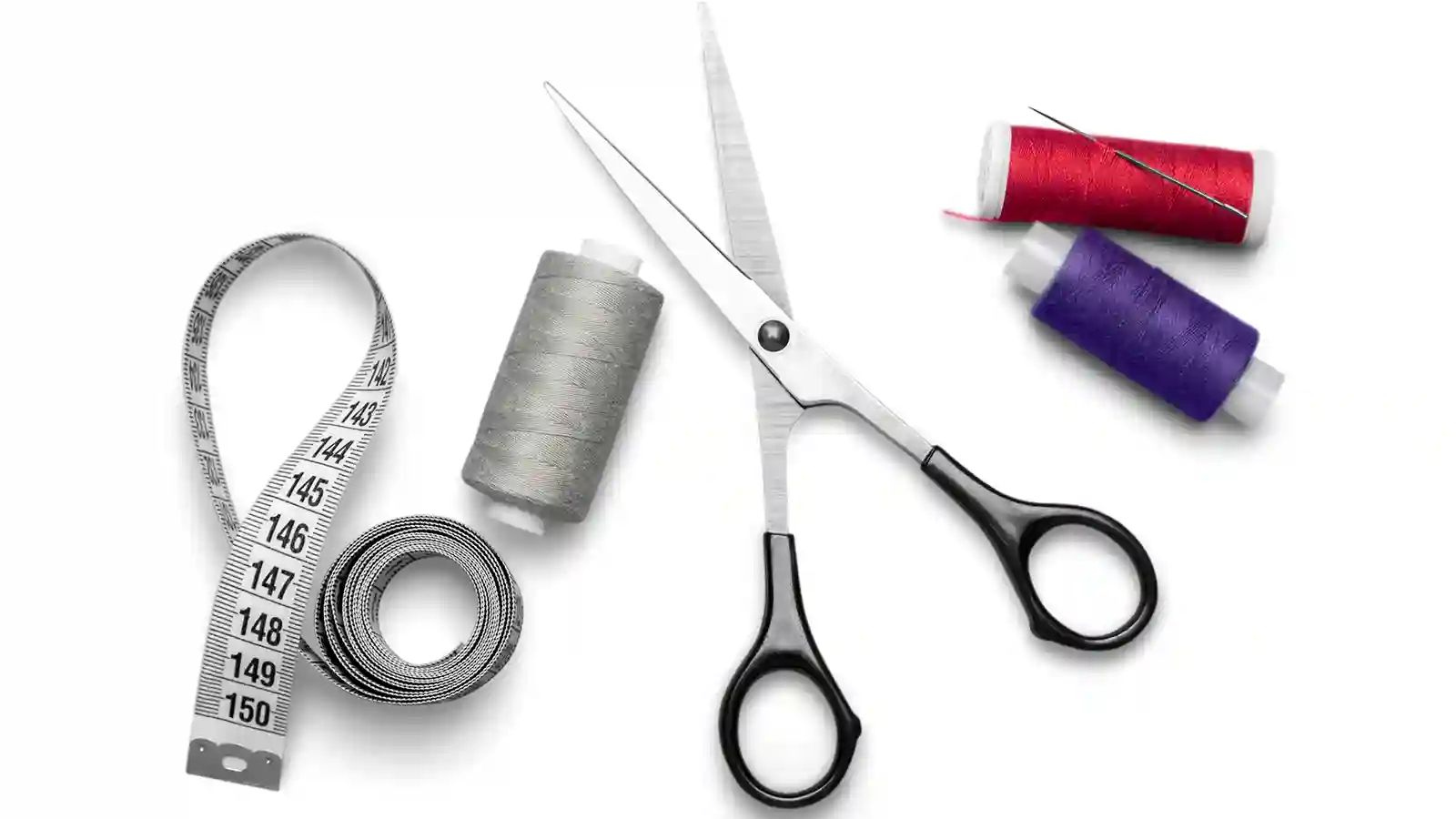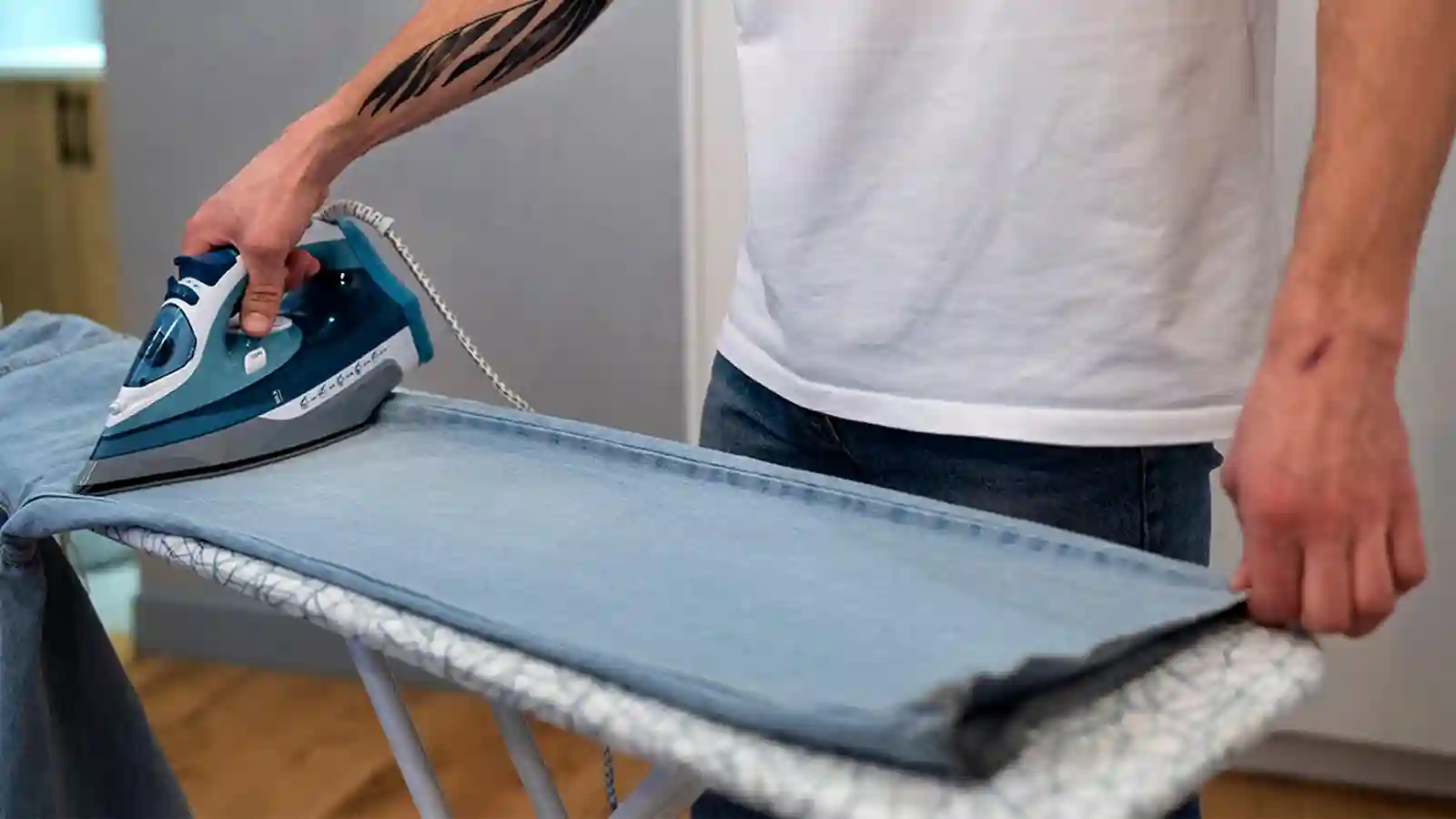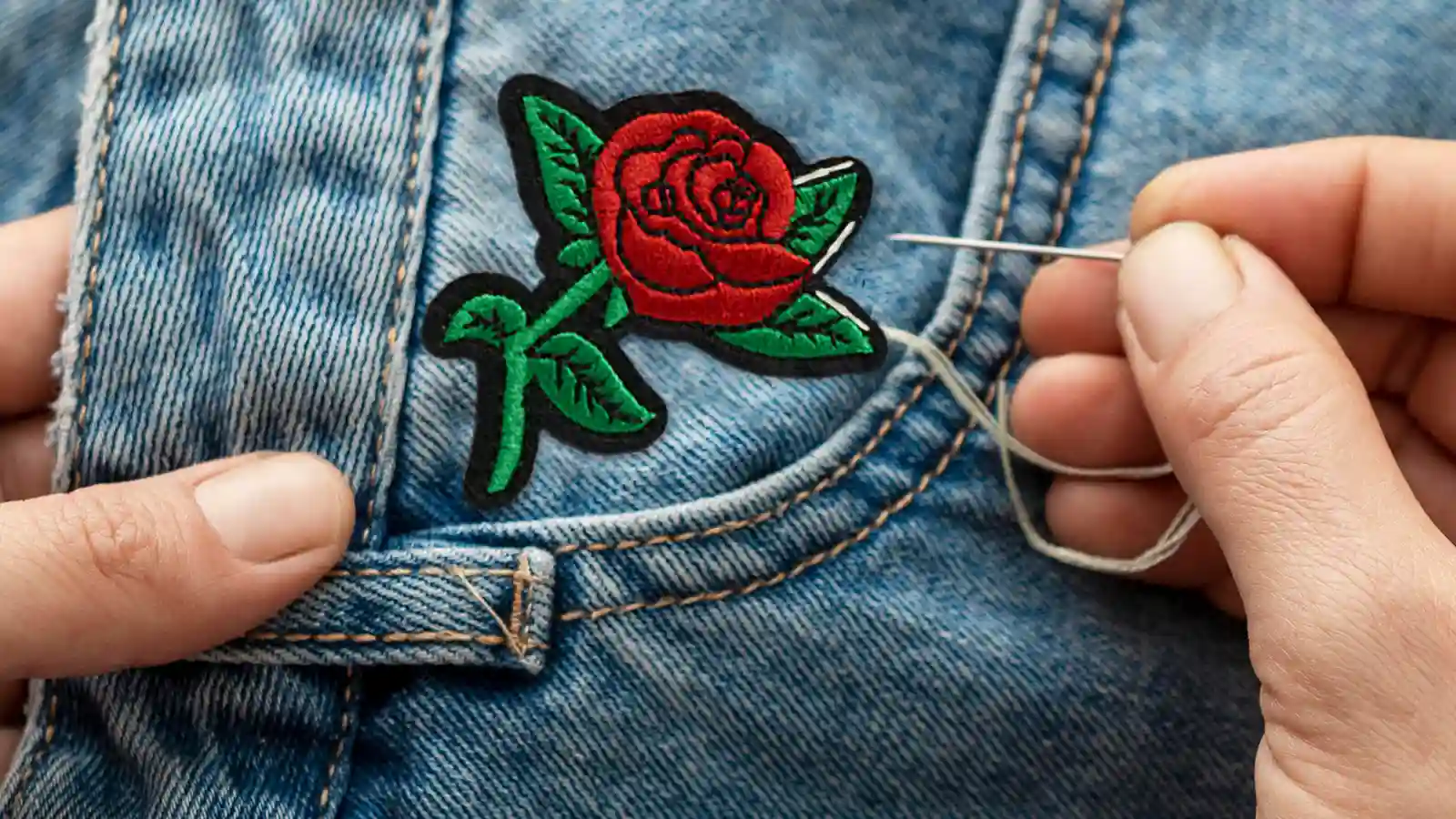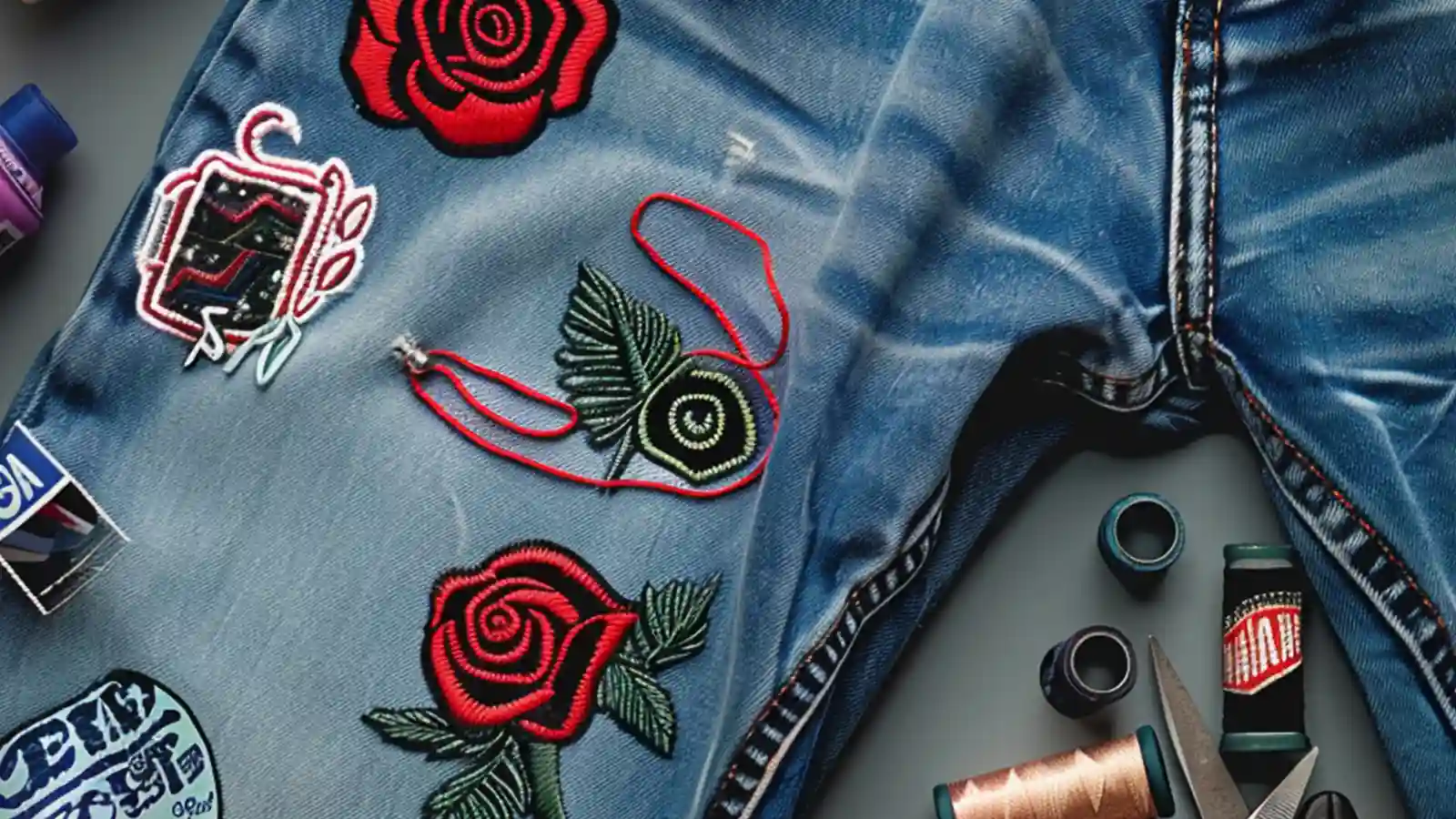Have you ever looked down at your favorite pair of jeans only to discover a hole or tear? Or perhaps you simply want to add some flair with a decorative patch. You’re not alone in facing this issue.
Adding patches is a great way to extend the life of your jeans or express your style. One interesting fact is that sailors used patches to mend their uniforms centuries ago, turning a practical solution into fashion.
This blog post will guide you through sewing patches on jeans by hand, from choosing the right materials to securing the patch firmly in place. We’ll cover everything step by step, making it easy for anyone to follow along and achieve professional-looking results without needing advanced skills or special tools.
Get ready to give your jeans a new lease on life! Keep reading; trust me, it’s simpler than it sounds.
Key Takeaways
- Picking the right materials, such as denim patches, fusible interfacing, a strong needle, and thread, ensures that your patch attaches securely to the jeans.
- A crucial step is preparing both the jeans and patch by cleaning and ironing them before sewing begins. This helps achieve smoother sewing.
- Using a basic running stitch around the edge of the patch secures it in place. Knotting the thread every few stitches adds extra durability.
- After sewing, trim any excess threads and inspect for loose stitches to maintain a neat appearance and ensure long-lasting wear.
Materials Needed

After the introduction, it’s time to gather your materials for sewing patches on jeans by hand. This step is crucial, as having the right tools can make the process smoother and more enjoyable. Here’s what you’ll need:
- Iron and Ironing Board: These are essential for preparing your jeans and patches. Ironing removes wrinkles and ensures a flat surface for easier sewing.
- Scissors: You’ll use these to cut the fusible interfacing and trim excess threads after sewing.
- Fusible Interfacing: This helps reinforce the area around the tear or hole, providing a stronger base for your patch.
- Decorative Patches or Denim Pieces: Choose a piece of fabric that matches or complements your jeans. This will be sewn over the damaged area. You can also choose decorative patches for extra flair.
- Needle: A sturdy needle is necessary for piercing denim fabric without bending or breaking.
- Thread: Choose high-strength threads in a variety of colors for patching jeans.
Ensure each item is ready before sewing to avoid interruptions during your repair project.
Preparation

Prepare the patch size and design, clean and iron the jeans and patch, and sew on your new patch.
Select the appropriate patch size and design
Choosing the right size and design for your patch is crucial before you start sewing. Ensure the patch covers the hole in your jeans completely, with a bit of extra space around the edges to secure it properly.
If you’re repairing a small tear, cut a square or shape that fits nicely over the area. For larger holes, a bigger piece of denim or premade patches work well. Consider using fusible interfacing to reinforce thinner patches or, if you prefer, an embroidered patch for decorative purposes.
Selecting a design that matches or complements your jeans can turn a repair into a fashion statement. Look at different colors and patterns to find one that either blends in seamlessly or stands out as an intentional addition to your garment.
Prepare the jeans and the patch
Clean the jeans and patch thoroughly to remove any dirt or oils. This ensures the patch adheres well during the sewing process. If there are frayed edges on the jeans or the patch, snip these off to achieve a clean edge for easier sewing.
Lay both items flat to check for any additional repairs that might be needed before attaching your patch.
Next, use an iron to smooth out wrinkles in both the jeans and the patch, especially if you’re using fusible interfacing for extra reinforcement. This step is crucial as it provides a flat surface that’s ideal for working on.
Sewing the Patch

Position the patch on the jeans, pin it in place, and start sewing around the edges using a basic running stitch to secure the patch. To learn more about how to sew patches on jeans by hand, continue reading.
Pin the patch in place to secure it
Position the patch on the desired area of your jeans. Use straight pins to secure it in place. This step ensures the patch stays put while you sew, preventing any shifting or misalignment.
With the patch in place, you can start sewing and securing it to your jeans.
Start the sewing process by anchoring the thread
To start sewing the patch on your jeans, knot one end of the thread and bring it through to the front side of the fabric. Next, loop the needle through this initial stitch to secure it in place.
This anchoring technique ensures that your thread won’t pull out when you start stitching around the patch’s edges using a basic running stitch. By securely anchoring your thread before sewing, you can maintain a stronghold throughout the patching process without worrying about loose stitches or unraveling.
Sew around the edges of the patch
After anchoring the thread, proceed to sew around the edges of the patch using a basic running stitch. This simple and effective stitching technique involves passing the needle in and out of the fabric along the edge of the patch in a continuous line.
Secure the thread at the end of the stitching
After stitching around the edges of the patch, secure the thread by creating a final knot. This will help keep the stitches in place and prevent them from unraveling.
To do this, simply loop the needle through one of the existing stitches and then pull it tight to form a small knot. Repeat this process once or twice to ensure that the knot is secure.
For extra reinforcement, you can also iron over the patch and fusible interfacing. This will help to set everything in place and provide additional strength to your hand-sewn patch.
Finishing Touches

After sewing the patch, trim any excess thread and inspect it for loose stitches to ensure a polished outcome. For a final touch, wash and iron your jeans to set the patch in place.
Trim any excess thread
After sewing the patch onto your jeans, it is crucial to trim any excess thread carefully using sharp scissors. Trimming the extra thread ensures a neat and professional finish, contributing to the patch’s longevity.
This step helps create a seamless and polished look while reinforcing the patch’s durability.
Inspect the patch for loose stitches
It’s also essential to inspect the patch for loose stitches. Pull gently on each stitch to ensure it is secure and won’t unravel over time. This simple step ensures your hard work endures after washing and ironing the jeans.
Conclusion
Sewing patches on jeans by hand is a practical and efficient way to repair or personalize your jeans. You’ve learned how to select the right patch, prepare the fabric, sew the patch using simple techniques, and add those finishing touches for a professional look.
These methods can make a significant difference in extending the life of your favorite pair of jeans or giving them an entirely new look.
Now is the time to unleash your creativity with confidence!
FAQs
1. How do I start hand sewing a patch on my jeans?
To start, choose one denim patch that matches your jeans. Thread your needle with strong thread, ideally embroidery thread, for durability. Place the patch over the rip or area you want to repair and begin with a small stitch under the fabric to hide the knot.
2. What kind of stitch should I use to sew a patch on jeans?
For sewing patches on jeans by hand, using a straight stitch around the patch’s edges works well for most repairs. If you’re looking for extra strength, try using a zig-zag stitch to ensure the patch holds firmly in place.
3. Do I need any special tools to sew patches onto my jeans?
All you need is a sewing needle, some thread (embroidery thread is recommended), and scissors to cut the thread when you’re done. A thimble can also be helpful to protect your finger when pushing through rigid denim.
4. Can I put patches on areas other than rips or tears in my jeans?
Absolutely! Patches are not just for repairing. They’re great for upcycling and adding personal flair to your garments. You can add them anywhere on your jeans without needing an existing tear or cut.
5. Is it possible to learn how to sew patches without using a sewing machine?
Yes, it’s entirely possible and quite easy once you get started! Sewing by hand allows more control over smaller details and is perfect for beginners who don’t even need a sewing machine.
6. Are there different ways I can style my patched-up jeans?
Definitely! Patchwork isn’t just about fixing tears; it’s also part of fashion design. Feel free to experiment with different patterns, thread colors, and stitches, like small or large stitches, or even layer multiple players for an eclectic look.





